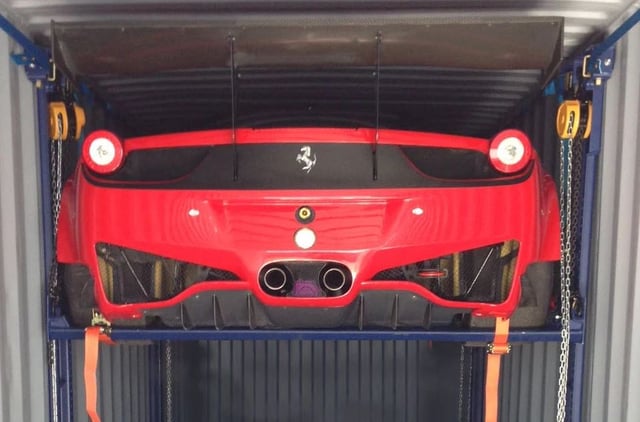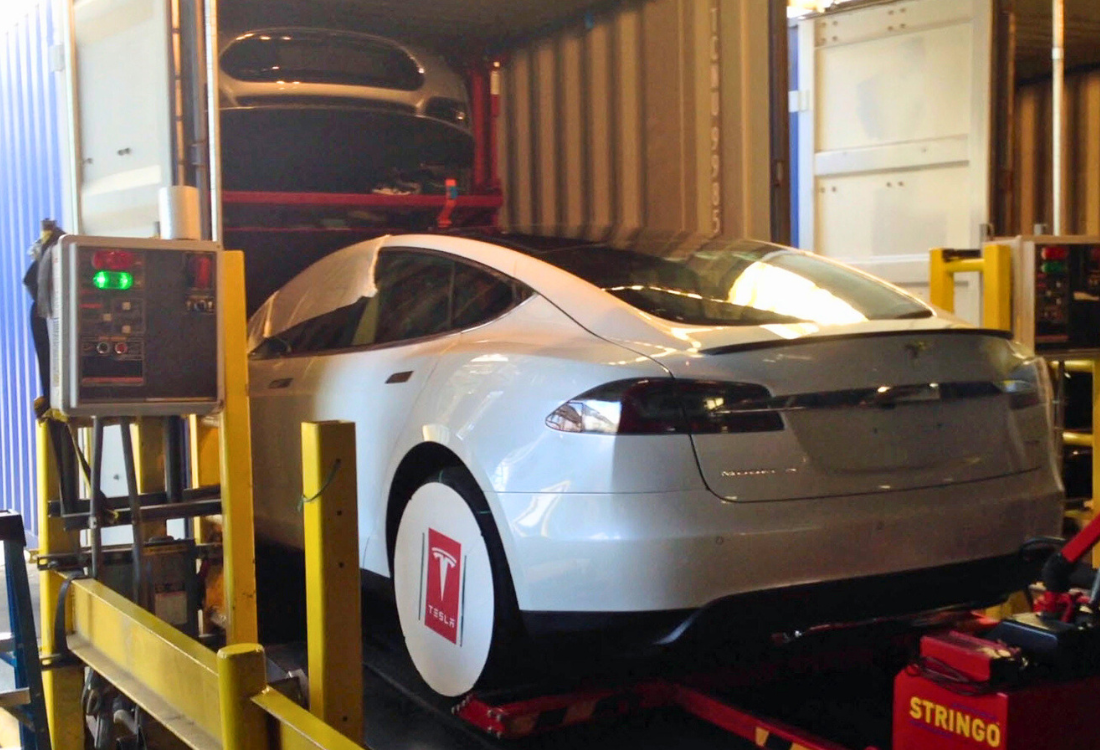
Container shipping for cars is an attractive alternative to RoRo because it reduces the amount of handling and transfers needed throughout a journey. Container shipping costs are therefore lower in terms of damaged stock. However, shipping containers come with a serious capacity issue – they can only transport two or maybe three vehicles at a time. This can add up to higher per unit costs compared with RoRo, which is why container shipping isn’t extensively used in automotive logistics.
One way of lowering your car container shipping costs is to increase the carrying capacity of each container. As shipping container sizes are standardised, the only way to do this is to make better use of the space inside the containers themselves so that each one takes more cars.
This can be done by fitting wood or metal racking inside the container. Wooden racking is the most commonly used but is it the best option? Let’s look at some of the facts surrounding wooden racking and explore the alternative.
Traditional Wooden Racking
Wooden racking is still widely used to increase the load capacity of shipping containers. However, this leaves plenty of opportunity for damage to vehicles. Wood is a sturdy material, but as each installation is an ad hoc affair, wooden racking cannot be certified for safety when transporting vehicles. The collapse of wooden racking while containers are being moved is not unknown – leading to irreparable damage to stored vehicles. Even granting that this won’t happen in most cases, the chance of wooden splinters damaging car bodywork are very high.
Wooden racking is also expensive as each rack can only be used once. Each installation takes hours for a team to make and install the racking, as well as to remove it at the end of the journey. As wooden racking is often damaged in transit and is too bulky for return shipment, at the end of a journey it will need to be broken down for recycling or burning. This is hugely wasteful of resources, is harmful to the environment and ties up additional manpower – costing more time and money.
Additionally, from an ecological standpoint, wooden racking is treated with Methyl Bromide, which is a harmful chemical both when applied at the beginning of the racking life cycle, and at the end when incinerated and the chemicals are released back into the air.
Steel Racking Systems
Logistics companies not only need to ensure their containerised vehicles are secure, but they also require a cost effective and affordable means of racking that allows for the shipping of several vehicles in a single container. A number of steel racking systems have been developed as an alternative to wooden constructs, among which our R-RAK is a good example. These systems have the advantage of being reusable, robust and easy to install.
Many businesses are discovering the benefits of steel racking as an alternative to RoRo, container shipping without racking and wooden racking.
- Less Risk From Handling
Unlike RoRo, with an R-RAK you only need to position the vehicle in the container, and then remove it at the end, which means that a low amount of handling is required, lessening the risk of damage. RoRo in comparison, requires handling of the vehicle at every single stage.
- Longer Lifecycle
In addition to a much lower damage risk, R-RAK systems have a much longer lifecycle than their wooden racking counterparts, as they can be used dozens of times. A life cycle assessment to compare the environmental damages of reusable steel racking systems and wooden racks found that steel racking systems produce less than 4% of the harm of using fumigated wooden racking and less than 65% of the harm of using non-fumigated wooden racking. Fumigation is typically required for export.
- Increased Shipping Volume
In terms of shipping volume, steel racking systems like R-RAK can transport a higher number of vehicles than ‘naked’ container shipping or wooden racking. Because of this, fewer shipping containers are required to get the same number of vehicles from one location to another, in turn lowering the cost per vehicle.
- Strength & Durability
Unlike wooden racking systems, the R-RAK is tested and certified for its strength and durability. Once vehicles have been dropped off at a destination, the R-RAK can be dismantled and packed away; and the container used to ship other goods.
- Safety
Wooden racking systems present many threats, both to the vehicles carried on them and the personnel who build them and load and unload vehicles. The sturdiness of the R-RAK allows vehicles to be safely lashed to racking framework. These systems are also fixed to the container itself, meaning very little movement to the vehicle during transit, and higher safety during unloading.
The bottom line is that cargo stored and shipped using vulnerable types of racking will result in the cargo itself being vulnerable to damage. The protection of valuable goods, like vehicles, must be placed at the top of your list of priorities. Failure to do this can result in extensive losses through product damage.
Steel racking systems like the R-RAK not only ensure that vehicles don’t become damaged during loading, transport and unloading, but also ensure the safety of those who do so, with far less damage to the environment than wooden racking systems.
The Containerised Car Transport Guide
To find out more about how the costs of car container shipping costs can be reduced, take a look at our new eBook. The Containerised Car Transport Guide can be downloaded from our website by clicking here. It is full of free advice on how to ship more cars, save on journey time and cut back the risk of damage in transit.















